|
|
|
|
|
Each bit may be assigned a value of '0' or '1' and we can use these two states to represent two tones -- say black and white -- for each of the pixels in our image. This equates to just one step -- not exactly a staircase.
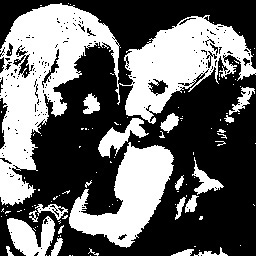 |
|
This is the result of assigning just one computer bit to each pixel in our image. We can have either black or white, with no gray tones in between. Everything below mid gray becomes black, everything above mid gray becomes white. This is how computer displays looked before graphics came along. |
If we use two computer bits to describe each pixel, they can either both be 'off', or the first one 'off' and the second 'on', or the first one 'on' and the second 'off', or both 'on'. This allows us four states -- black, dark gray, light gray and white. Are you keeping up? Here it is diagrammatically and pictorially.
|
|
|
|
|
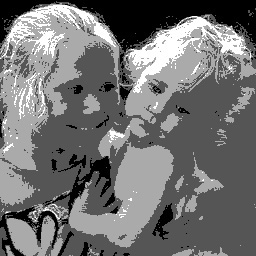 |
|
Representing an image in only four tonal values can hardly be said to be 'photographic' in quality, though the extra two tones are a step in the right direction. |
Adding a third bit increases the number of states to eight. These are all the various combinations.
![]()
![]()
![]()
![]()
![]()
![]()
![]()
![]()
![]()
![]()
![]()
![]()
![]()
![]()
![]()
![]()
![]()
![]()
![]()
![]()
![]()
![]()
![]()
![]()
A staircase of seven steps gives us eight clearly defined levels between ground (level zero) and upper floor (the seventh step and, therefore, the eighth level). If applied to every point on an image, would eight steps be enough to represent a continuous tone image? Let's see what describing an image in eight tonal steps gives us.
Seven
steps give us eight levels, if we count the ground
floor and top step. Ground represents black in our
image, the top white, with six shades of gray in
between. With
black, white and six tones of gray in between the
image still looks posterized. Eight steps is not
enough for full tonal representation.
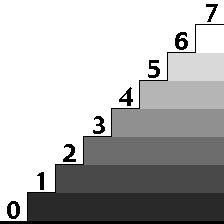
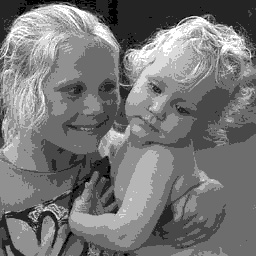
It's clear that we need more than three bits per pixel. The big question is -- how many bits per pixel do we need to display our image with full tonality on the computer screen?
CHARTING THE STEPS
I think you've got the light switch analogy by now. Showing banks of up to eight switches in all their two hundred and fifty six combinations of 'on' 'off' states would be too much for both of us. So I'm going to show you in chart form from now on.
This chart shows all the gray tonal values which computers can display, together with how many computer bits are required to describe them. Notice that we term the number of bits used to describe each pixel of an image as the "bit depth".

The top three tonal scales are the ones we worked through earlier. A bit depth of one gives us two tonal values, a bit depth of two gives us four tones, and a bit depth of three gives us eight tones.
Note that the number of tones doubles for each additional bit devoted to describing each pixel. By the time we get up to six bits per pixel (64 tones) it becomes difficult to differentiate between the individual progressive tonal steps. For seven and eight bits per pixel, the tones appear smooth and stepless.
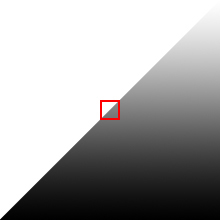 |
 |
|
You can't see the individual steps -- though they're there -- in this 8 bits per pixel (256 tone) image … |
… unless you look very closely, as in this close-up section. |
At
8 bits per pixel (256 tones) we have what appears
to be stepless photographic quality.

So there you have it. That's how we analyze tone for digital imaging.
Now we can go on to analyse the COLOR in an image.
All text and photographs are Copyright © 2005-2008 by John Henshall. All rights reserved.